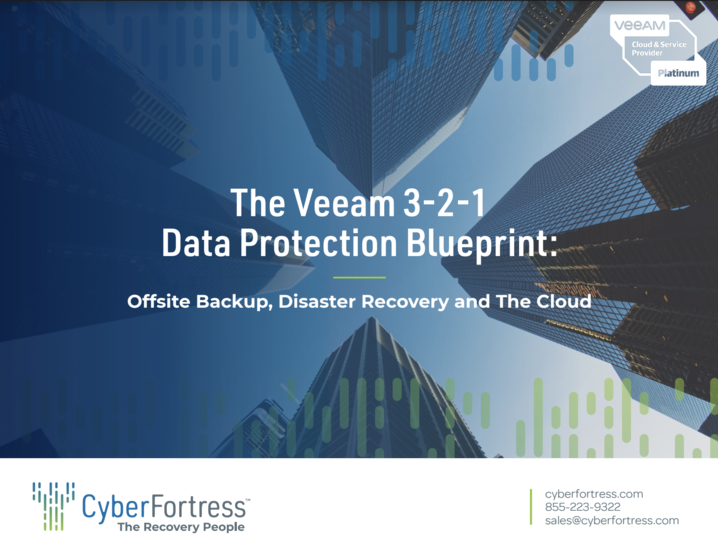Business data is in greater jeopardy than ever. Along with the usual risks — equipment failure, data corruption, building fires, and plumbing mishaps — companies are increasingly threatened by wildfires, flooding, and extreme weather. Ransomware attacks are also proliferating. Thus, it’s more critical than ever to implement data protection services like Veeam cloud backups, or another cloud backup solution to ensure rapid recovery. With many advancements being made in the last several years, does the 3-2-1 rule, long the gold standard for data protection, still apply?

What To Consider When Looking at 3-2-1 In 2022
To figure out if 3-2-1 still holds up, a few considerations must be made:
- Its relevance in a changing IT environment
- Protecting data and apps in the cloud
- Guarding against ransomware attacks
- The latest adaptation – zero risk
These topics are thoroughly covered in OffsiteDataSync’s free E-Book, 3-2-1 Data Protection Blueprint: Offsite Backup, Disaster Recovery & The Cloud. Written for IT pros, and featuring information on cloud backup leader Veeam, it contains valuable information on how to implement data protection at a time when corporate data and applications increasingly reside in the cloud, outside the confines of the network perimeter.
A Rule Invented for a Different Era
Chapter One of the ebook tackles a serious question: Does a data protection practice developed in 2005 work in a world that’s changed so dramatically? A world with state of the art cloud backup solutions? Most data protection service specialists still practice the 3-2-1 rule — having three copies of data on two different types of media, with at least one of those copies offsite — but IT professionals need to weigh the effect of new developments.
This chapter highlights changes such as:
- Data and applications have largely migrated from on-premises storage, which was standard two decades ago, to the cloud.
- Software-as-a-service (SaaS), then in its infancy, has become commonplace.
- We’ve moved way beyond the daily or weekly tape backups that were the norm.
- Ransomware attacks were much less numerous and much less sophisticated.
Though 3-2-1 emerged in a very different tech environment, this chapter examines its current relevance. Using at least two different types of media ensures that a problem with a specific storage device — say, a hard drive — won’t affect both backups. And storing at least one copy offsite with a Veeam cloud backup, or other cloud backup solution, ensures a single event can’t destroy all of your backups.
In the era of ransomware, though, offsite means more than physically separated. Backups must be logically separated so it’s difficult for anyone without the proper authorization to access them. Otherwise, a ransomware attack could encrypt not only the production copy but also backup copies connected to the production environment.
The 3-2-1-0 Variation
The recoverability of backups, referred to as “zero errors,” has emerged as a priority and given rise to the 3-2-1-0 variation.

This basic security practice provides solid guidance for reducing backup risk. But is it really necessary with backups stored in hyperscale clouds that automatically copy data multiple times within a highly redundant architecture? We’ll address this question in later chapters and cover the advantages and disadvantages of different storage media, getting a copy offsite, and how organizations can best use 3-2-1 to mitigate the threat of ransomware.
Finally, we’ve included an infographic in Chapter One with easy-to-follow steps for implementing a sustainable 3-2-1 backup strategy.
Coming Up
There’s a lot more to our new e-book, which is available as a free download.
What you’ll find in 3-2-1: Where Are You in Your Data Protection Journey?
- Chapter One: 3-2-1 — The backup rule from another era…which we still follow today
- Chapter Two: The risks 3-2-1 mitigates – Ransomware, Disasters and More
- Chapter Three: Media for backup targets and getting a copy offsite
- Chapter Four: Testing backup
- Chapter Five: Outsourcing backup to a service provider
In each chapter, you’ll find additional tools — from challenging quizzes to encompassing checklists — to help advance your data protection knowledge and efforts.



